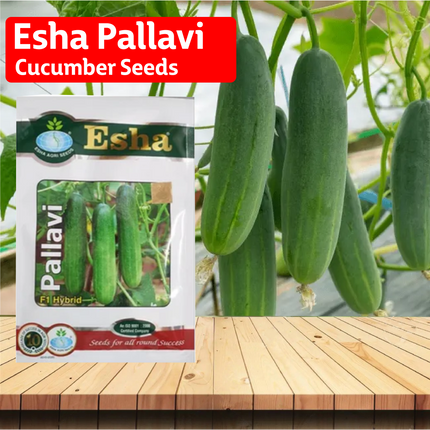Esha Pallavi Cucumber Seeds - 25GM
- PHS Seeds
Rs. 458.00
- Taxes are Included on Price. Shipping charges will applicable as per the Order Size.
हाय किसान एग्रीप्लेक्स इंडिया में आपका स्वागत है | 1299/- से अधिक के ऑर्डर पर निःशुल्क डिलीवरी प्राप्त करें
Rs. 458.00

{ 5 में से 0 } सितारे
इस प्रोडक्ट की अभी तक कोई समीक्षा नहीं है